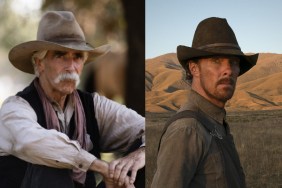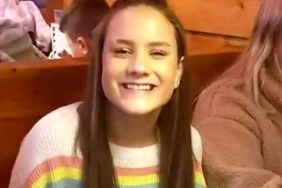Greetings, my gentle students, to the 111th week of CraveOnline‘s Free Film School, which is easily the best film school to ever have been established in the history of the medium. For returning students I ask: How does it feel to have a larger brain and a hugely increased sex appeal? For first timers: prepare yourself for a new world of increased amazingness. This week’s lecture will be the first part of a two-part essay that will detail, in brief, the history of gay characters in cinema, point out many relevant titles in the movement of gay equality (although I will leave many out just for the sake of brevity; there are literally hundreds of great queer films in the world), and how the movies have served as a reflection of how the world tends to view gay people, and how gay people often view themselves. This article was inspired largely by a book written by Vito Russo in 1981, and the 1995 documentary film based on it from 1995.
In the first part of this lecture, I will trace gay characters through the 1920s all the way through the 1960s. This was a time of hiding and coding gay characters, and a time when homosexuality wasn’t too often openly dealt with in the movies. Next week, I will talk about how the 1969 Stonewall riots sparked a new visibility for the gay community, and how that visibility spread into movies, in both positive and negative ways. I will finish next week’s lecture with the Jason Statham action flick The Transporter from 2002 as a clear indicator that gay culture is finally mainstream, and gay movie characters have finally reached the level of the incidental.
I’ll begin with a question: What was the first gay character you saw in a movie? For many of you reading this, who were, I’m guessing, born in the 1990s, the answer may be kind of irrelevant. By the 1990s and beyond, gay characters were pretty common in movies and on TV. Indeed, the notion of the “gay best friend” to the female romantic lead is such a well-worn trope at this point that any screenwriter who includes it is liable to be laughed at by his peers. In an age of marriage equality, “Glee” and “Drag Race,” does it really matter who is gay anymore? Some would say that it doesn’t. There is still a lot of acceptance to be gained in this country (and in other countries), but the dominoes are toppling, and patience will prove full equality soon enough.

But for old-timers like me, who were born in the 1970s and before, the first homosexual character from a movie was kind of a shocking – or at least surprising – thing. I think the first outright homosexual thing I saw in a movie was, inauspiciously enough, a lesbian kiss in the 1991 Blake Edwards comedy Switch. I was 12 years old. In the film, a womanizing misogynist is killed by several girlfriends, and, in a fit of divine justice, is allowed to return to Earth in the body of a woman, played by Ellen Barkin. He’s still a straight man on the inside, so he finds himself/herself attracted to women. Two women kiss passionately in the film. I wasn’t grossed out or titillated by the scene, but I was a little startled. This was simply not something I had seen in a film before. Women smooching on each other was, I learned, not terribly common in movies. Indeed, frank and open depictions of homosexuality on film was only exploding in earnest in 1991, and had spent a good 70 years going through all kinds of growing pains.

Where to begin? Let’s go back to the 1920s. If you watch older silent movies – say 1927’s Wings, the first film to have won an Academy Award for Best Picture – you will find weepy and emotional men who kiss one another and openly declare their friendship. The men loved each other deeply and valued their friendship above all other relationships. You find this kind of intense male friendship in many old works of literature. It’s not necessarily a sexual attraction, but it does seem romantic. Ironically, these pseudo-romantic relationships were only possible because of the absence of outright homosexuality in the film. If the public were constantly thinking of gay coding (as a modern audience no doubt does), then the men would be seen as lovers and not as friends, sex would enter the picture, and some audiences would get uncomfortable. The same can be said for women. Women would sometimes kiss and hold hands and be physical as a form of friendship. Was there any actual gay romance happening in these scenes? To be sure, there was. But it wasn’t much of an issue.
Outright gays were on screens in the ’20s and ’30s, but they weren’t necessarily called “homosexual,” or “gay,” and they were certainly never seen having relationships with other homosexuals. There was the occasional mincing male or butch lady, but they were often used as comedic stereotypes. Fashion-obsessed, limp-wristed caricatures, these “sissy” characters were – and in a way still are – broad stock characters whose wimpiness (in the case of the men) or toughness (in the case of the women) were seen as hilarious slapstick juxtapositions to what men and women really “ought” to be doing. Sadly, these types persist today. Just this year, I saw A Haunted House, which features a lisping gay comedy avatar, and I saw Grown-Ups 2, which featured a female bodybuilder who dresses as Hulk Hogan. Hollywood is still living down the gay stereotype that was in place 75 or 80 years ago.
Very occasionally, you had a film like 1930’s Morocco, wherein Marlene Dietrich dressed in a tuxedo and kissed a woman on the lips, much to the joy of the men in the room, and to the woman she kissed. Or maybe Call Her Savage, a Clara Bow vehicle from 1932, which featured scenes inside cinema’s first gay bar. Indeed, 1933’s Queen Christina is about a real-life lesbian queen from Sweden, and her sexuality – while never openly discussed – is pretty clear. Despite these examples, “gay” wasn’t really talked about in movies.







